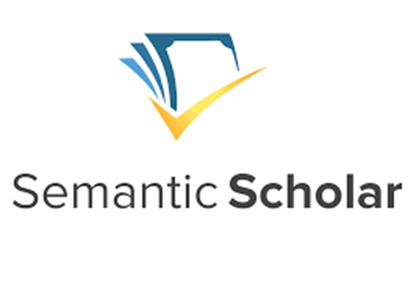Analysis and High Accuracy Prediction of Diabetes using Gradient Boosting Algorithm
Keywords:
Diabetic dataset, Classification, Machine Learning, Gradient BoostingAbstract
Changing the info information into the arrangement of highlights is called include extraction if the highlights extricated are precisely picked it is normal that the highlights set will separate the pertinent data from the information so as to play out the coveted errand utilizing this diminished portrayal rather than the full size info. In this paper, gradient boosting machine learning technique to train the Diagnosis diabetes to classify the diabetes patients is two class values. The positive diabetes patients are defined by class ‘0’ value and negative diabetes patients are defined by class ‘1’. The total Diagnosis diabetes dataset is 768. All dataset applied to the gradient boosting machine learning technique and get the 500 dataset is not diabetes and 268 dataset is diabetes. In proposed algorithm we used an ensemble of gradient boosting to achieve an accuracy of 81.95%. The Majority vote-based model as demonstrated which comprises of Naïve Bayes, Decision Tree and Support Vector Machine classifiers gave an accuracy of 76.56%, sensitivity of 79.16% and specificity of 77.476% for diabetes disease dataset.
References
Naveen Kishore C, V.Rajesh, A.Vamsi Akki Reddy, K.Sumedh, T.Rajesh Sai Reddy, “Prediction of Diabetes using Machine Learning Classification Algorithms”, International Journal of Scientific & Technology Research, Volume 9, Issue 01, January 2020.
Muhammed Azeem Sarwar, 2Nasir Kamal, 3Wajeeha Hamid,4Muman Ali Shah, “Prediction of Diabetes Using Machine Learning Algorithms in Healthcare”, 24th International Conference on Automation & Computing, Newcastle University, Newcastle upon Tyne, UK, 6-7 September 2018.
Rao G.A., Syamala K., Kishore P.V.V., Sastry A.S.C.S. ., “Deep convolutional neural networks for sign language recognition”, 2018, International Journal of Engineering and Technology(UAE) ,Vol: 7, Issue 5, pp: 62 to 70.
M. Chen, Y. Hao, K. Hwang, L. Wang, and L. Wang, “Disease Prediction by Machine Learning over Big Data from Healthcare Communities,” IEEE Access, vol. 5, no. c, pp. 8869–8879, 2017.
L. Zhou, S. Pan, J. Wang, and A. V. Vasilakos, “Machine learning on big data: Opportunities and challenges,” Neuro computing, vol. 237, pp. 350–361, May 2017.
J. B. Heaton, N. G. Polson, and J. H. Witte, “Deep learning for finance: deep portfolios,” Appl. Stoch. Model. Bus. Ind., vol. 33, no. 1, pp. 3–12, Jan 2017.
Reddy S.S., Suman M., Prakash K.N. ., “Micro aneurysms detection using artificial neural networks”, 2018, Lecture Notes in Electrical Engineering , Vol: 434 , Issue 3, pp: 409 to 417.
Kavakiotis, I., Tsavo, O., Salifoglou, A., Maglaveras, N., Vlahavas, I., Chouvarda, I., “Machine Learning and Data Mining Methods in Diabetes Research”, Computational and Structural Biotechnology Journal 15, 104–116, 2017.
Majid Ghonji Feshki and Omid Sadoodi Shijani, “Improving the Diagnosis of Diabetes Disease by Evolutionary Algorithm of PSO and Feed Forward Neural Network”, International paper on IEEE 2016.
L. Hernawati, “Combining Backward Elimination and Naïve Bayes Algorithm To Diagnose Breast Cancer”, Momentum, vol. 11, no. 1, pp. 42-45, 2015.
Alex Savena, K. Runx, R. Singh, “Diagnosis of Diabetes Mellitus using K-nearest Nearest Neighbor Algorithm”, International Journal of Computer Science Trends and Technology (IJCST), 2014.
L. Hernawati, C.S. Nugroho, “Combining of Backward Elimination and K-Nearest Neighbor Algorithms To Diagnose Heart Disease”, Prosiding SNST Ke-5 Fakultas Teknik Universitas Wahid Hasyim, pp. 1-5, 2014.
R.A. Vinarti, W. Anggraeni, “Identification of Prediction Factor Diagnosis of Breast Cancer Rates with Stepwise Binary Logistic Regression Method”, Jurnal Informatik, vol. 12, no. 2, pp. 70-76, November 2014.
Muhammad Waqar Aslam, Zhechen Zhu and Asoke Kumar Nandi, “Feature generation programming with comparative partner selection for diabetes classification”, Expert Systems with Applications”, 5402-5412, IEEE 2013.
Downloads
How to Cite
Issue
Section
License

This work is licensed under a Creative Commons Attribution-NonCommercial 4.0 International License.





